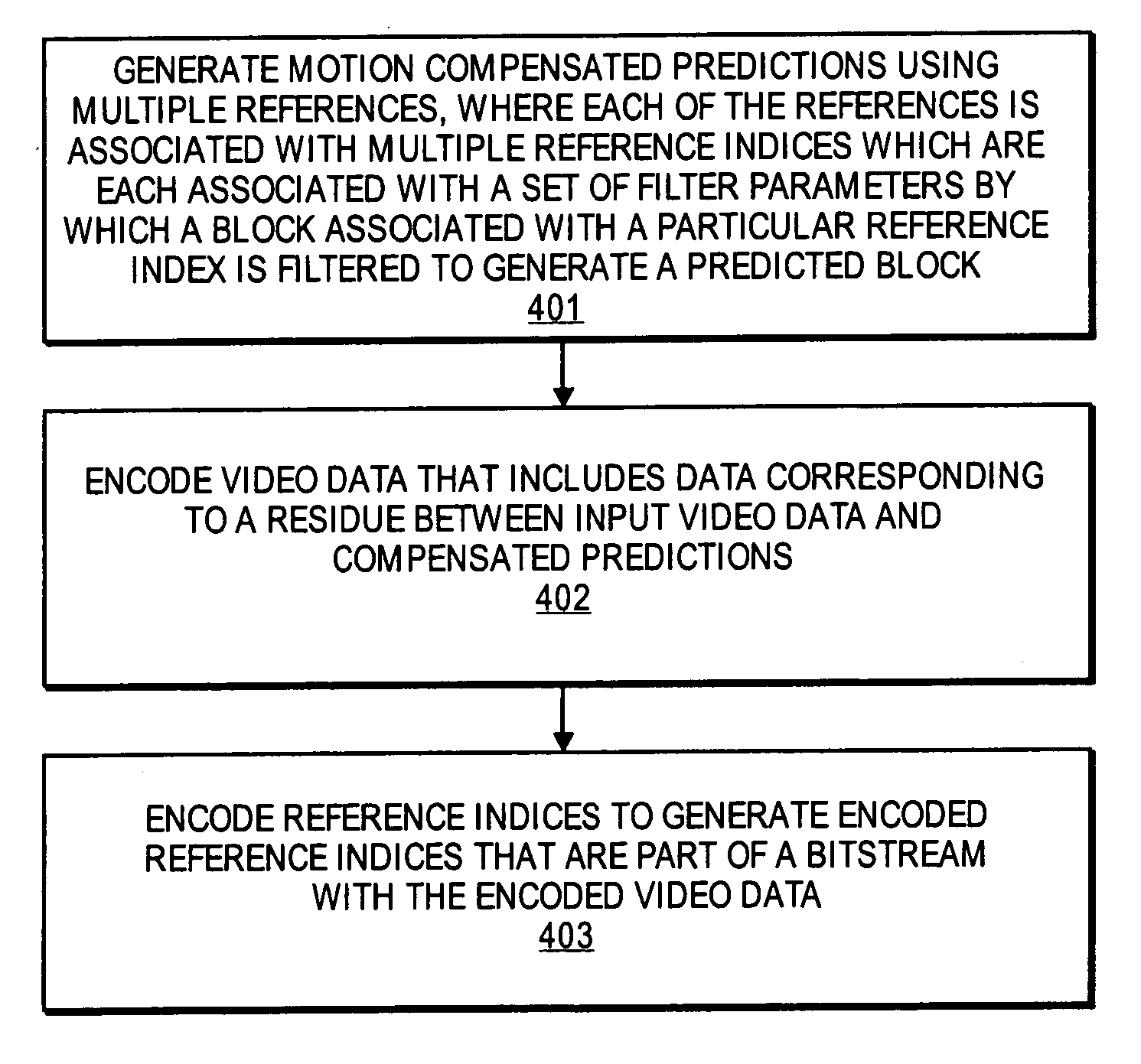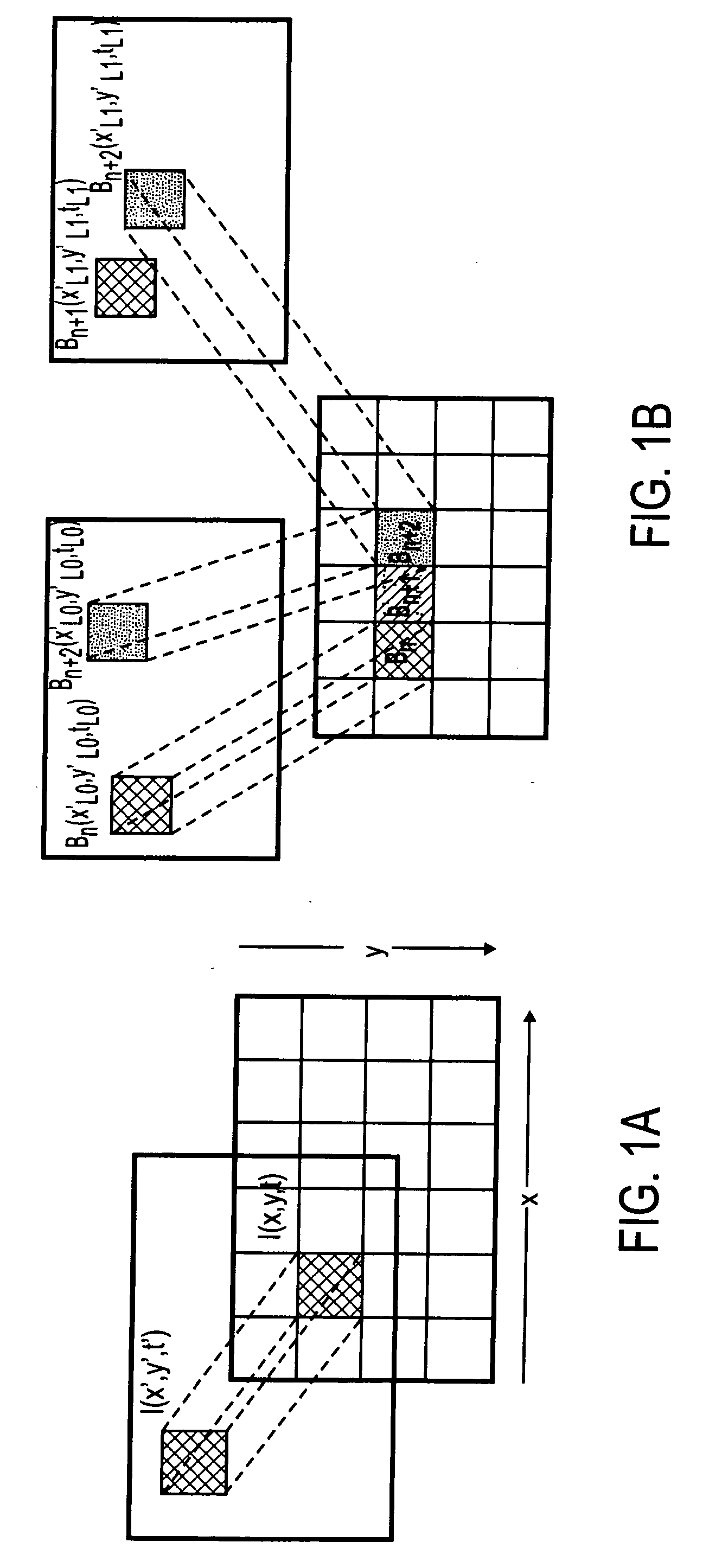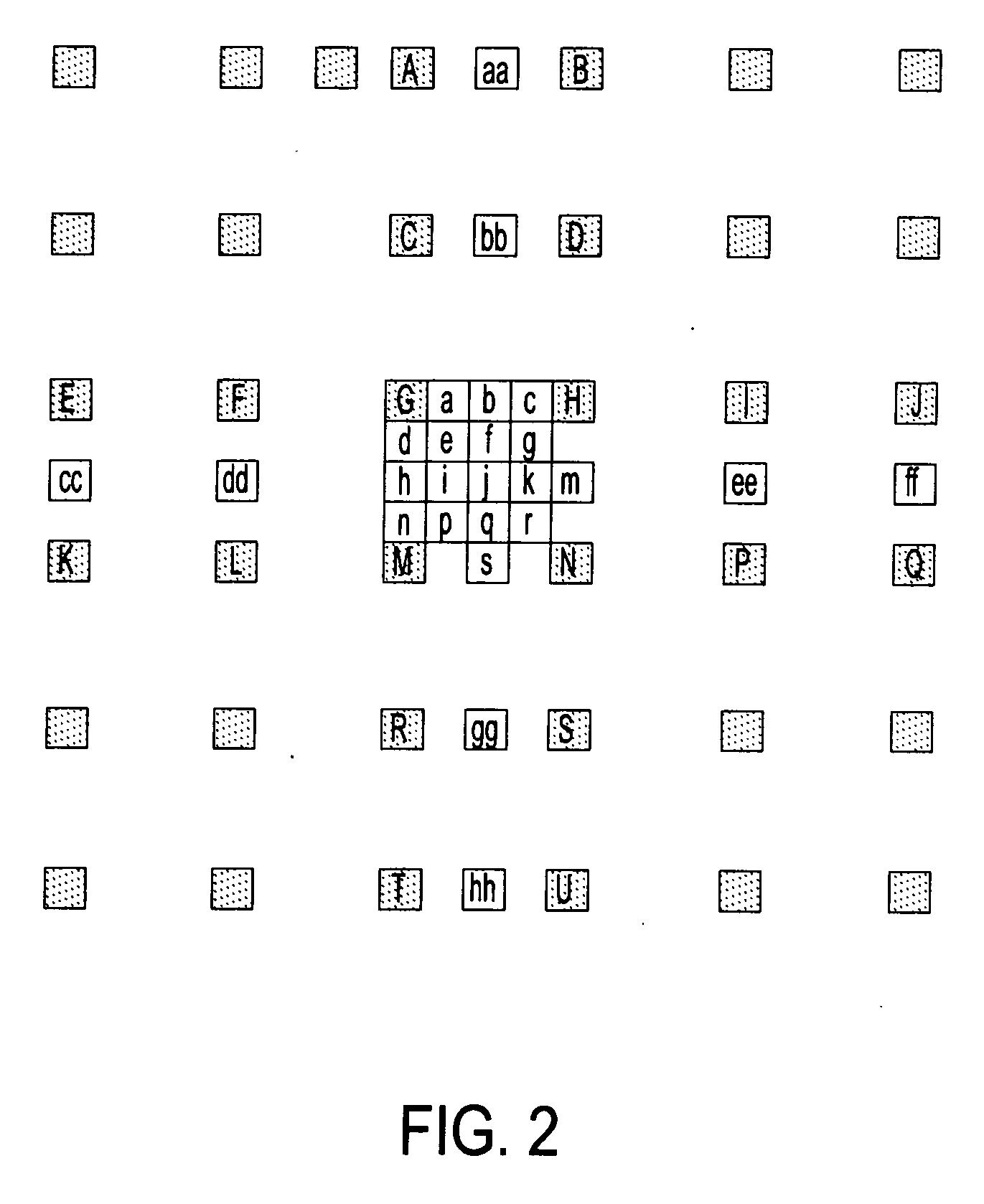Method and apparatus for video encoding and decoding using adaptive interpolation
a technology of adaptive interpolation and video encoding, applied in the field of video encoding and decoding, can solve the problems of deteriorating interpolation and motion compensation prediction, insufficient use of fixed filters, and inability to justify the significant increase in bit overhead due to the effect of bit overhead
- Summary
- Abstract
- Description
- Claims
- Application Information
AI Technical Summary
Problems solved by technology
Method used
Image
Examples
Embodiment Construction
[0028] A video encoding and decoding architecture that includes adaptive interpolation filtering is disclosed. Unlike prior work where fractional sample interpolation is performed using a single filtering mechanism, the coding scheme described herein uses an adaptive signaling mechanism where each partition is assigned to a different fractional sample interpolation filter. This could allow for a further improvement in terms of the performance of motion compensated prediction, thereby resulting in increased coding efficiency compared to existing methods or standards. In one embodiment, this is achieved by first associating a reference picture by not only a single reference index but instead multiple indices. Each of these reference indices is then further associated with a different interpolation filtering mechanism, which can either be known to the decoder or explicitly transmitted to the decoder. The selection of the interpolation filter is then based on the reference indicator ass...
PUM
 Login to View More
Login to View More Abstract
Description
Claims
Application Information
 Login to View More
Login to View More - R&D
- Intellectual Property
- Life Sciences
- Materials
- Tech Scout
- Unparalleled Data Quality
- Higher Quality Content
- 60% Fewer Hallucinations
Browse by: Latest US Patents, China's latest patents, Technical Efficacy Thesaurus, Application Domain, Technology Topic, Popular Technical Reports.
© 2025 PatSnap. All rights reserved.Legal|Privacy policy|Modern Slavery Act Transparency Statement|Sitemap|About US| Contact US: help@patsnap.com



